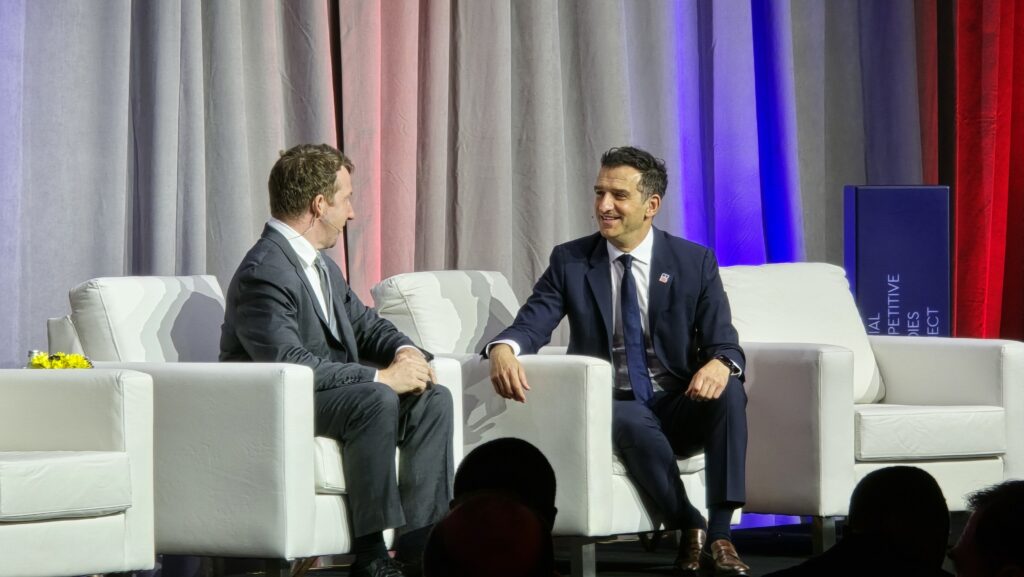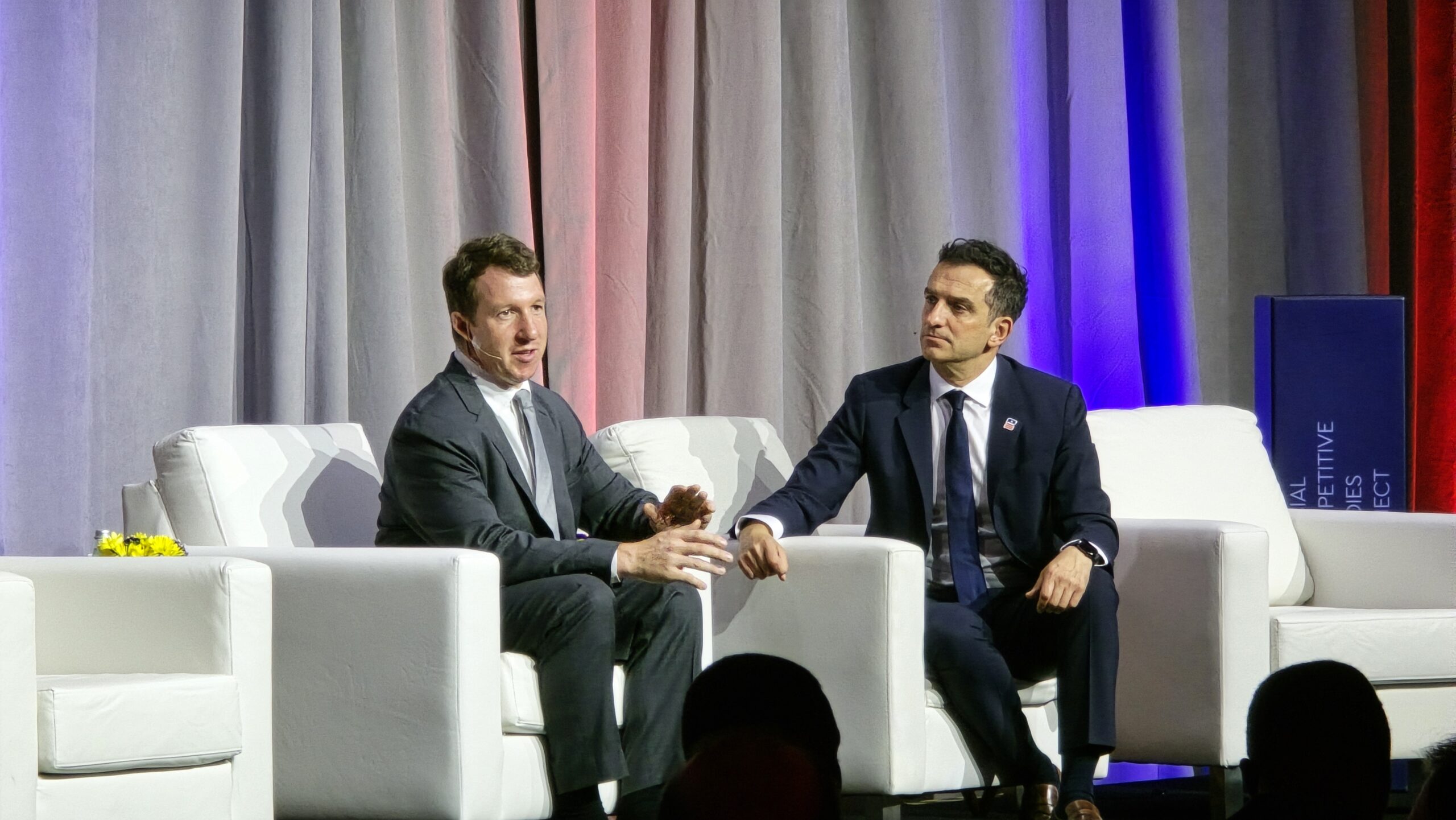At the AI+ Science Summit in Washington, D.C., the Fireside Chat: Frontiers & Foundations brought together Jack Clark, co-founder and Head of Policy at Anthropic, and Ylli Bajraktari, CEO and President of the Special Competitive Studies Project (SCSP), for a wide-ranging discussion on the state and future of large language models (LLMs) and AI’s transformative potential.
From Early Curiosity to Widespread Adoption
Jack Clark reflected on how quickly the landscape has shifted. Just a few years ago, using a large language model was an obscure activity for researchers; now, it’s practically ubiquitous across industries and homes. Technologies once nascent in 2016 and 2017 have exploded in capability and adoption, powering everything from everyday productivity tools to creative endeavors. Clark wryly noted how this rapid mainstreaming has left even experts marveling at how fast progress has accelerated.
The Expanding Power of Language Models
Clark emphasized the sheer scale and unexpected versatility of today’s AI systems. Tasks that once took humans hours, like translating code or generating complex written content, are now routinely handled by AI, often with remarkable creativity and competence. This shift is not just about automating rote jobs but about fundamentally amplifying human productivity.
He teased what lies just ahead: AI “employees” working alongside us, performing multifaceted tasks that approach real organizational collaboration. Clark shared a humorous anecdote about someone wondering what to do when their AI starts doing their job better than they can, illustrating the profound workplace changes already underway.
Changing the Nature of Work and Management
One key insight was the evolving skill set needed to work with AI. Programming expertise will matter less; instead, communicating effectively with AI, crafting detailed instructions, managing iterative projects, and setting ambitious goals, will become core competencies. In essence, workers will become managers of AI collaborators, navigating a new form of delegation and oversight.
Clark also noted how users improve their “prompt engineering” abilities over time, refining how they extract value from AI tools. This skill growth parallels learning to manage human teams but with a digital twist.

AI and Personal Perspectives
On a more personal note, Clark shared his reflections on how fatherhood and managing AI blur the lines between intimate human experience and technological innovation. For example, he recounted an interaction where AI helped him write a personal diary entry with surprising emotional insight, demonstrating AI’s emerging ability to engage with nuance and context.
He also illustrated AI’s growing creativity through examples such as AI-generated variations of classic games (tic-tac-toe or snake), underscoring the rapid evolution beyond simple rule-based systems.
Education and Curiosity in an AI Future
Looking toward the next generation, Clark emphasized the importance of nurturing curiosity and play, especially in education. He argued that as AI becomes ubiquitous, human creativity and experimental mindsets will be critical differentiators. Schools and institutions must therefore foster environments where students are encouraged to tinker, explore, and ask “what if?”, skills that AI will augment rather than replace.
Global Landscape and Competition
Turning to the international AI scene, Clark highlighted that the U.S. remains a leader, fueled by significant investments and talent concentration. China, meanwhile, has developed accessible, widely-used models like Baidu’s Ernie and others, rapidly closing the gap. The pace of AI improvement is measured in roughly six-month cycles, with U.S. companies currently outspending Chinese counterparts several-fold.
Clark underscored the importance of export controls, especially on advanced AI chips, to maintain strategic advantages. He also praised the U.S. government’s increasing focus on rigorously testing both domestic and Chinese AI models for safety, bias, and national security risks.
AI Safety and National Security Challenges
Clark called attention to two broad categories of emerging risks from AI:
- Non-State Actor Misuse: Criminals and bad actors using AI for disinformation, cybercrime, and other nefarious activities, risks that will proliferate as AI tools become more accessible.
- State Actor Escalation: Nation-states deploying AI to greatly augment offensive cyber operations, intelligence, and influence campaigns, potentially magnifying existing threats exponentially.
He stressed the urgent need for governments to adopt and integrate cutting-edge AI tools to maintain an edge. Without doing so, even technically superior actors could be overwhelmed simply by being outnumbered.
Reflecting on Competition with China
While China is making impressive strides, Clark noted the U.S. private sector tends to innovate faster and more flexibly than government entities, the latter often slowed by bureaucracy and internal inertia. Empowering leadership and reducing friction in adopting AI technologies within government will be key to sustaining technological leadership.
Looking Ahead: The Next 3 Years and Beyond
Clark imagined a near future where AI-powered drones could autonomously manage complex tasks and programming with minimal human intervention, a glimpse of truly intelligent, adaptable machines integrated into everyday life.
However, these advances come with high stakes. The pace of developing AI capable of improving itself (“recursive self-improvement”) introduces profound strategic risks. Safety and ethical considerations must be deeply embedded, lest such powerful technologies be misused or spiral beyond control.
Final Thoughts
Jack Clark wrapped by urging the importance of focusing not solely on AI capabilities themselves but on the “automated R&D” systems these technologies enable, using AI to accelerate scientific discovery and innovation loops. The side effects of these transformations are both vast opportunity and critical responsibility.
He reminded the audience that maintaining frontier leadership depends on ensuring Western actors retain access to the best AI technologies, balancing openness with appropriate controls.
Conclusion
This fireside chat illuminated the extraordinary trajectory of AI, from niche research curiosity to widespread transformative force. Jack Clark’s insights offered a blend of grounded pragmatism, visionary foresight, and thoughtful caution about the societal, security, and economic implications of AI’s rise.
For anyone interested in the cutting edge of AI development and its global dynamics, this conversation was a rare window into the challenges and opportunities at the frontier of artificial intelligence.
For more information, please visit the following:
Website: https://www.josephraczynski.com/
Blog: https://JTConsultingMedia.com/
Podcast: https://techsnippetstoday.buzzsprout.com
LinkedIn: https://www.linkedin.com/in/joerazz/


Leave a Reply
You must be logged in to post a comment.